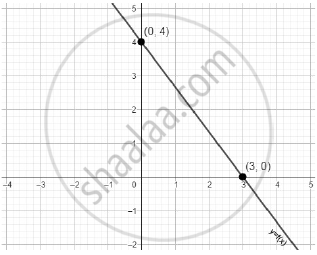Advertisements
Advertisements
प्रश्न
If the graph of a polynomial intersects the x-axis at exactly two points, it need not be a quadratic polynomial.
पर्याय
True
False
उत्तर
This statement is True.
Explanation:
If the graph of a polynomial intersects the x-axis at exactly two points.
Then it may or may not be a quadratic polynomial.
As, a polynomial of degree more than 2 is possible which intersects the x-axis at exactly two points when it has two real roots and other imaginary roots.
APPEARS IN
संबंधित प्रश्न
The graphs of y = p(x) are given in following figure, for some polynomials p(x). Find the number of zeroes of p(x), in the following.

Find the zeroes of the quadratic polynomial `f(x) = 5x^2 ˗ 4 ˗ 8x` and verify the relationship between the zeroes and coefficients of the given polynomial.
Find the zeroes of the quadratic polynomial `f(x) = 6x^2 – 3.`
If 𝛼, 𝛽 are the zeroes of the polynomial `f(x) = x^2 – 5x + k` such that 𝛼 - 𝛽 = 1, find the value of k = ?
10. The zeroes of the quadratic polynomial x² + kx + k, k? 0.
The zeroes of the quadratic polynomial x² + 1750x + 175000 are ______.
If one of the zeroes of the quadratic polynomial (k -1)x² + kx + 1 the value of k is ______.
If f(x) = 5x - 10 is divided by x – `sqrt2`, then the remainder will be ______.
If 4x² – 6x – m is divisible by x – 3, the value of m is exact divisor of ______.
The given linear polynomial y = f(x) has

